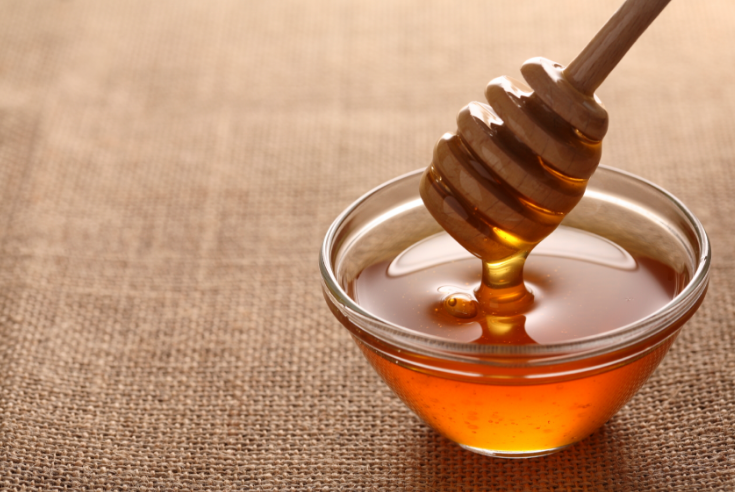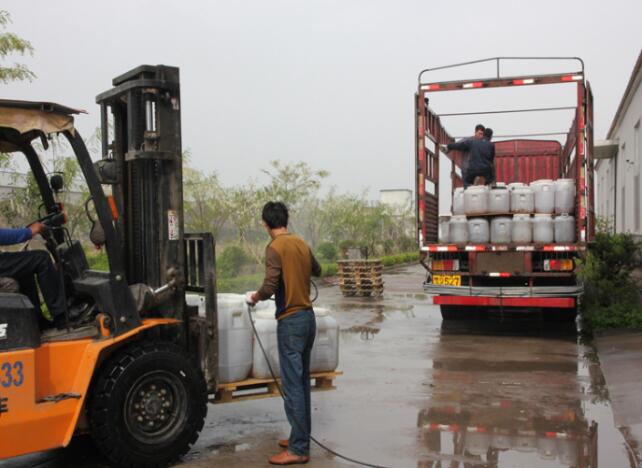Natural Bee Honey
Natural Bee Honey
Honey is a sweet, viscous food substance produced by bees and some related insects.Bees produce honey from the sugary secretions of plants (floral nectar) or other insects through regurgitation, enzymatic activity, and water evaporation. Honey is stored in wax structures called honeycombs.
Honey is a widely known natural food that produced by the bees. The collecting bees sucked the nectar from the flowers and store it in the second stomach then return to the hive for worker bees to digest the raw nectar for about 30 minutes using enzymes to break up the complex sugars into simpler ones. Then it spread into empty honeycomb cells to eliminate the water and transform the sugars to obtain honey. Once the honey is processed, the cells of the honeycomb are sealed with beeswax for preservation.

If the honey comes from one type of flower, then it is called mono-flower honey. Such as acacia honey, linden honey, chaste tree honey etc. Among them, the most well know and abundant honey is the multi-flower honey, which is a mixture of the nectar from different flowers. It is also named according to its color, such as extra white honey, extra light amber honey (ELA), light amber honey (LA) and amber.
In addition to being an amazing natural sweetener, honey has benefits that have gone largely unknown. It's a wholesome sore-throat soother, a natural energy booster and more.
Nutrition
It's not just versatile, varied and delicious. Research has shown that honey contains a wide array of vitamins, minerals, amino acids and antioxidants. Flavonoids and phenolic acids, which act as antioxidants, are found in honey. The amount and type of these compounds depends largely on the floral source.
Sweetener
Honey is sweet—that’s a given. And it adds a special touch to almost every recipe. It can be your secret ingredient that's always revealing new possibilities. Many people think of honey as a drizzle in desserts or a topping for toast. But more and more, honey is being recognized as a pantry staple. It gives your recipes unbeatable flavor and unexpected functional benefits. From balancing flavors to providing moisture to baked goods, honey excels in a slew of tasks—all from one little bottle and only one ingredient.
Natural Energy
Honey is a natural source of carbohydrates, providing 17 grams per tablespoon, which makes it ideal for your working muscles. Since carbohydrates are the primary fuel the body uses, honey can help maintain muscle glycogen, also known as stored carbohydrates, which gives athletes the boost they need when they need it most.
Cough Suppressant
Honey has been used for centuries to help alleviate symptoms of the common cold, and now research confirms this approach for children ages one and older. Honey offers an effective and natural alternative to over-the-counter cough medicine. Though time is the most important healer of a sore throat, a spoonful of honey can help relieve the irritation.
If you’re ready to incorporate raw honey into your diet, then check out these honey uses.
Improve digestion – Use a tablespoon or two to counteract indigestion since it doesn’t ferment in the stomach.
Relieve nausea – Mix honey with ginger and lemon juice to help counteract nausea.
Lower cholesterol – It can help reduce cholesterol and therefore decrease your risk for coronary artery disease.
Improve circulation – Raw honey makes your brain function optimally by strengthening the heart and improving blood circulation.
Antioxidant support – Consumption of raw honey increases plaque-fighting antioxidants.
Restore Sleep – Raw honey promotes restorative sleep. Add a tablespoon to warm milk to help increase melatonin and help you sleep.
Lose weight – Substituting raw honey for white sugar can help in weight management
Reduce inflammation – Raw honey has anti-inflammatory agents that can treat respiratory conditions such as asthma.
Relieve sore throat – Honey uses for sore throats is another fantastic remedy. Simply mix it with lemon essential oil and peppermint oil for fast acting benefits.
Classification by packaging and processing
Generally, honey is bottled in its familiar liquid form. However, honey is sold in other forms, and can be subjected to a variety of processing methods.Crystallized honey occurs when some of the glucose content has spontaneously crystallized from solution as the monohydrate. It is also called "granulated honey" or "candied honey". Honey that has crystallized (or commercially purchased crystallized) can be returned to a liquid state by warming.
Raw honey is as it exists in the beehive or as obtained by extraction, settling, or straining, without adding heat (although some honey that has been "minimally processed" is often labeled as raw honey).Raw honey contains some pollen and may contain small particles of wax.
Creamed honey, also called whipped honey, spun honey, churned honey, honey fondant, and (in the UK) set honey, has been processed to control crystallization. Creamed honey contains a large number of small crystals, which prevent the formation of larger crystals that can occur in unprocessed honey. The processing also produces a honey with a smooth, spreadable consistency.
Dried honey has the moisture extracted from liquid honey to create completely solid, nonsticky granules. This process may or may not include the use of drying and anticaking agents.Dried honey is used in baked goods,and to garnish desserts.
Comb honey is still in the honeybees' wax comb. It is traditionally collected using standard wooden frames in honey supers. The frames are collected and the comb is cut out in chunks before packaging. As an alternative to this labor-intensive method, plastic rings or cartridges can be used that do not require manual cutting of the comb, and speed packaging. Comb honey harvested in the traditional manner is also referred to as "cut-comb honey".
Chunk honey is packed in widemouth containers consisting of one or more pieces of comb honey immersed in extracted liquid honey.


CONTACT US:SEND YOUR INQUIRY DIRECTLY TO US GOT THE FREE SAMPLE FOR WHOLESALE BUSINESS.
Contact Us
